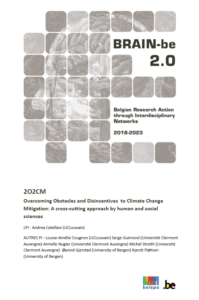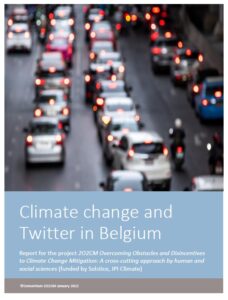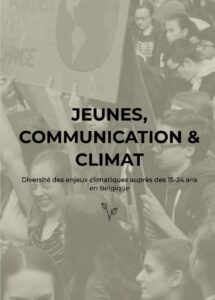Overcoming Obstacles and Disincentives
to Climate Change Mitigation:
A cross-cutting approach by human and social sciences
Reports
Conclusions originating from social media data and thematic focused surveys
Overcoming Obstacles and Disincentives to Climate Change Mitigation: A cross-cutting approach by human and social sciences. Final Report.
Report for the project 2O2CM Ovecoming Obstacles and Disincentives to Climate Change Mitigation: A cross-cutting approach by human and social sciences.
Cite as:
Objectives
Our research aimed to enhance the identification of the barriers and deterrents hindering behavioural shifts and attitudes that would help to mitigate CC, by mobilising together various human and social sciences. Through the collaboration between disciplines (linguistics, semiotics, anthropology, and social-psychology), our goal was to advance current knowledge by integrating expertise on the interpretation of textual and visual signs that shape individual and cultural perceptions with the one on the social and psychological determinants influencing behaviours and attitudes. We conceptualise obstacles and deterrents as encompassing all factors, whether consciously acknowledged or subconscious, that impede or weaken pro-environmental behaviours. We compared Belgium, Norway, and France’s trends in order to describe the cultural differences that underlie the variation of behaviours.
We articulated the work in 3 parts: (1) to identify the construction of awareness and understanding of CC in discourse practices, both in surveys and on digital social platforms; (2) to define the production of knowledge related to CC in a specific physical location; (3) to evaluate the impact of psychological variables on the production of CC meaning and on action in favour of CC.
Drawing upon existing literature across diverse research domains, our secondary objective was to contribute to identify effective communication strategies and to develop novel communication approaches and prototypes that will help mitigate obstacles to positive attitudes towards CC.
Climate change and Twitter in Belgium
Report for the project 2O2CM Ovecoming Obstacles and Disincentives to Climate Change Mitigation: A cross-cutting approach by human and social sciences.
Cite as:
Abstract
This report is part of the project 2O2CM Overcoming Obstacles and Disincentives to Climate Change Mitigation: A cross-cutting approach by human and social sciences, funded by Solstice (JPI Climate). The goals of this analysis are to understand “how climate change is depicted and communicated in Twitter; what are the obstacles to the adoption of attitudes and behaviours of climate change mitigation: forms of resistance, deformation, and denial; and what textual sources are mostly read, cited and commented on by laypeople and authorities online.” We will tackle these questions from a linguistic perspective, and particularly with a combination of methods from corpus linguistics and discourse analysis (which will be explained in detail in section 2.). This will translate very specifically in the following objectives: Objective 1: Collect a corpus of Belgian French, Climate change-related tweets Objective 2: Analyze the distribution of the data across segments, time and particular accounts (most active, most mentioned) Objective 3: Analyze the presence and distribution of several important axes related to Climate change that have a crucial impact on individual life (food, transport, energetic efficiency) Objective 4: Extract and analyze the expressions of difficulty in the corpus at different linguistic levels.
Jeunes, Communication & Climat. Diversité des enjeux climatiques auprès des 15-24 ans en Belgique
Report of the UCLouvain for the Federal Council for Sustainable Development.
Cite as:
Abstract
How do Belgian youths see their future? This guiding question led us to query a diverse group of youths about their perspectives on their future. Perspectives include their understanding and perception of phenomena linked to climate change, the way they get informed, their vision on the education they have received and what awaits them on the job market. To empirically approach these questions, a twofold field research study was conducted. A first quantitative part identified the different practices and perceptions of certain categories of youths sorted by sociodemographic criteria prior to the survey. The second quantitative part fine-tuned the information thanks to focus groups that surveyed the opinion of the most vulnerable Belgian youths. This field research supports the importance of considering the “youth” social group (ages 15 to 24) as a diverse social group. Indeed, there are significant differences especially between different socioeconomic or age categories. To overcome these conclusions and to further explore the segmented analysis of youths, seven different “youth personae” were defined. These personae were not created to force youths into boxes but to offer personalised solutions based on their different practices and values. The result of this research provides recommendations on how to communicate about climate-related topics to youths, and on the policies to be put into place in order to encourage them to be more eco-conscious. These recommendations are general but also specific to each persona. Finally, the recommendations not only come from the experts participating in this research, but also the youths themselves.



